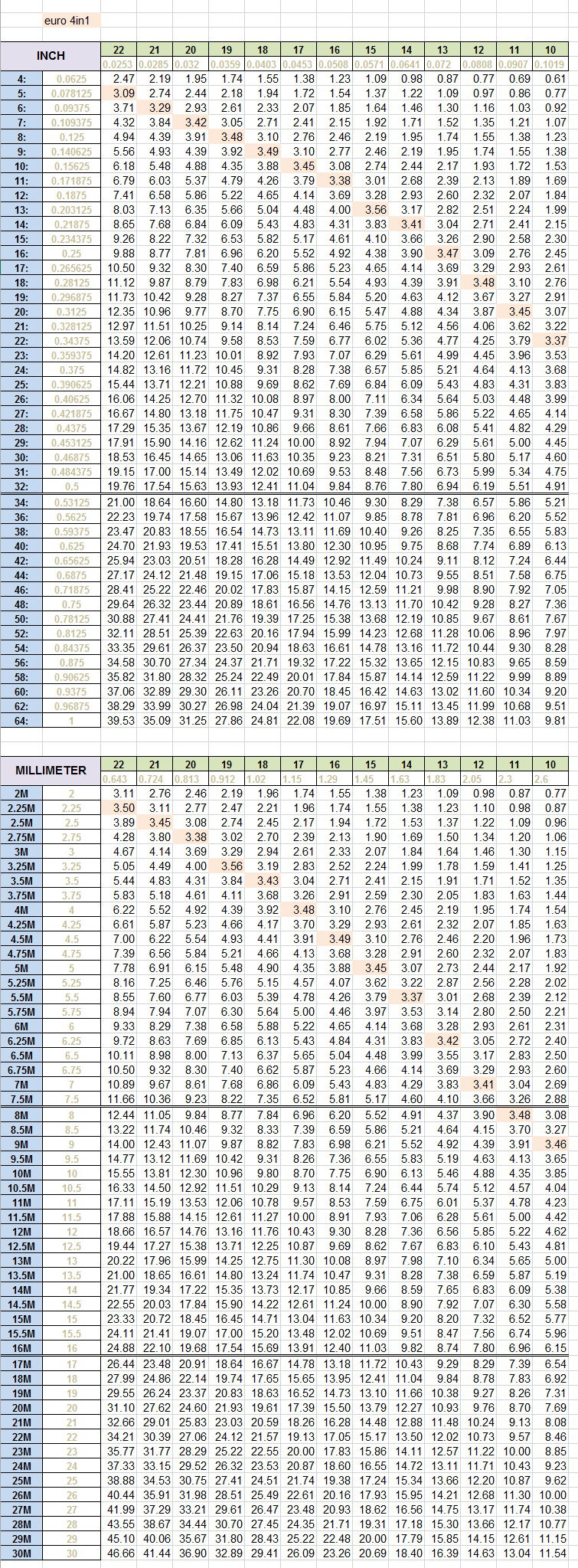

Unfortunately, the AR you calculate or get from a chart isn't always the exact AR of the rings you have, unless you're starting with actual measured values. The "Weave Ratio Chart" is similar to Zlosk's table the "ID/ SWG Ratio Chart" is similar to Sushi's chart, but gives IDs in millimeters as well as inches (and WDs in inches, mm, and SWG gauges) and the "Recommended Ring Size Chart" gives specific sizes for weaves in SWG and fractions of inches. Venom's Pit has several handy AR-related charts. Zlosk also has a FAQ page about aspect ratios here. Zlosk's Aspect Ratio Table - This table tells you the preferred AR for several weaves. Some very thoughtful maillers have created reference charts that will do most of the work for you: Take this into consideration when you see recommended sizes.įortunately, you can use ARs without having to go through lots of calculations. Decreasing the AR slightly will tighten the weave, but it may be harder to work. Increasing the AR by increasing the inner diameter or using a thinner wire will make the chain looser and easier to weave. Within the range of possible ARs, there is some room for personal preference.
Chainmaille aspect ratio calculator full#
(I use these sizes for Full Persian 6-1 and Half Persian 4-1.) Likewise, the second and fourth rings have similar ARs and can be used for the same weaves (such as the Byzantine in the photo above). In the ring comparison photo, the first, third, and fifth rings have similar ARs, so those ring sizes will probably work for the same weaves. The arrow shows where one unit of the Byzantine has flipped back on itself, which doesn't happen with the other chains. The weave is very loose - it has a lot of open space and is much less stable. The third chain uses rings with a much higher AR the ID is bigger than in the first chain, and the wire is thinner than in the second chain. The results are similar even though the IDs and wire gauges are different. The top two ring sizes have similar ARs, and the weave is nice and snug.

To produce a stable, attractive weave, use rings with an AR close to the recommended value.Ĭonsider these three sterling silver Byzantine chains, each woven with a slightly different ring size:

Each weave has an optimal AR, or range of possible ARs, and maillers generally establish their own preferences. With the same ID, going to a thinner wire gauge increases the AR.ĪR determines how loose or tight a weave will be. These are sterling silver rings gauges are in AWG.įor rings with the same wire gauge, making the ID smaller decreases the AR. Here's how changing the ID or wire gauge affects AR.

That's why finding the right AR is so important. If the AR is too big, the weave will be floppy and may not hold its shape. If the AR is too small, you won't be able to fit the rings into the weave. Imagine trying to weave a chain with each of these ring sizes. Okay, so now that the number-crunching stuff is out of the way, what does this actually mean? Compare these two rings: Note that you can't plug in the gauge for the WD it has to be the actual length measurement with appropriate units. Both measurements must use the same units (inches, millimeters, etc.) so that the units will cancel properly. donuts.) These lengths can be measured with calipers, or you can use reference charts to estimate them. You can think of ID as the hole in a donut, and WD as the thickness of the donut itself. So what is AR? Mathematically speaking, it is the ratio of the inner diameter of a ring to the diameter of the wire it is made of. If you know the AR of the rings you have, you can find out what weave you can make with them. If you know the right AR for a weave, you can determine an appropriate ring size. This value, something of a magic number, serves as the mediator between weave and ring size. Society for Creative Anachronisms (SCA)Ī common question when learning a new weave is "What size ring should I use for this?" The best way to find an answer is to understand the concept of aspect ratio.


 0 kommentar(er)
0 kommentar(er)
